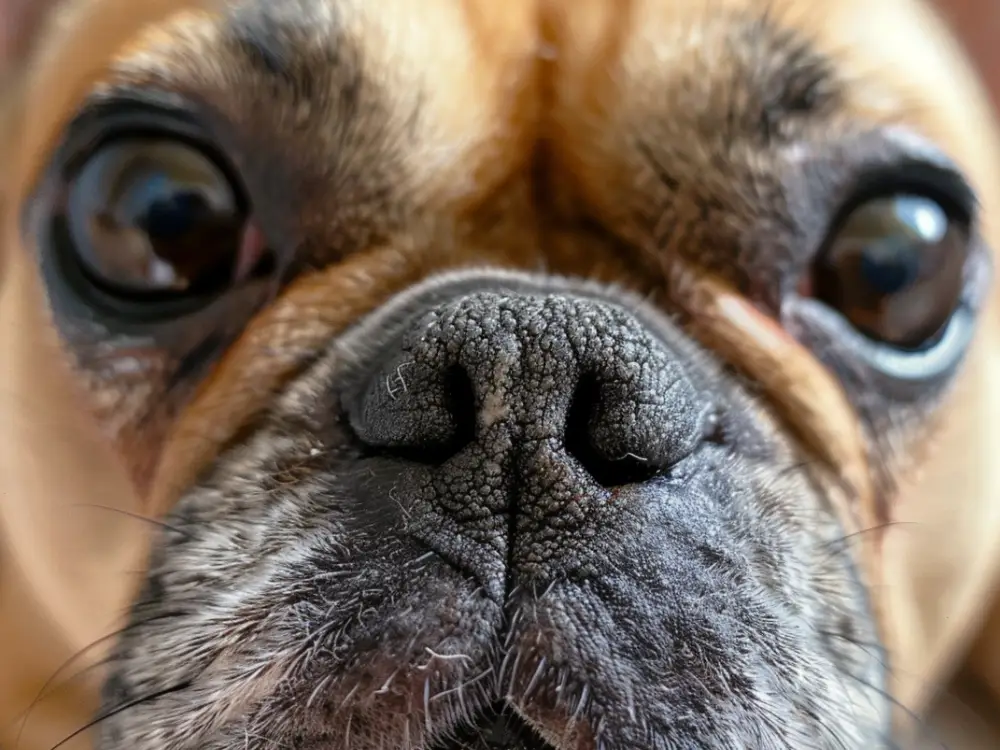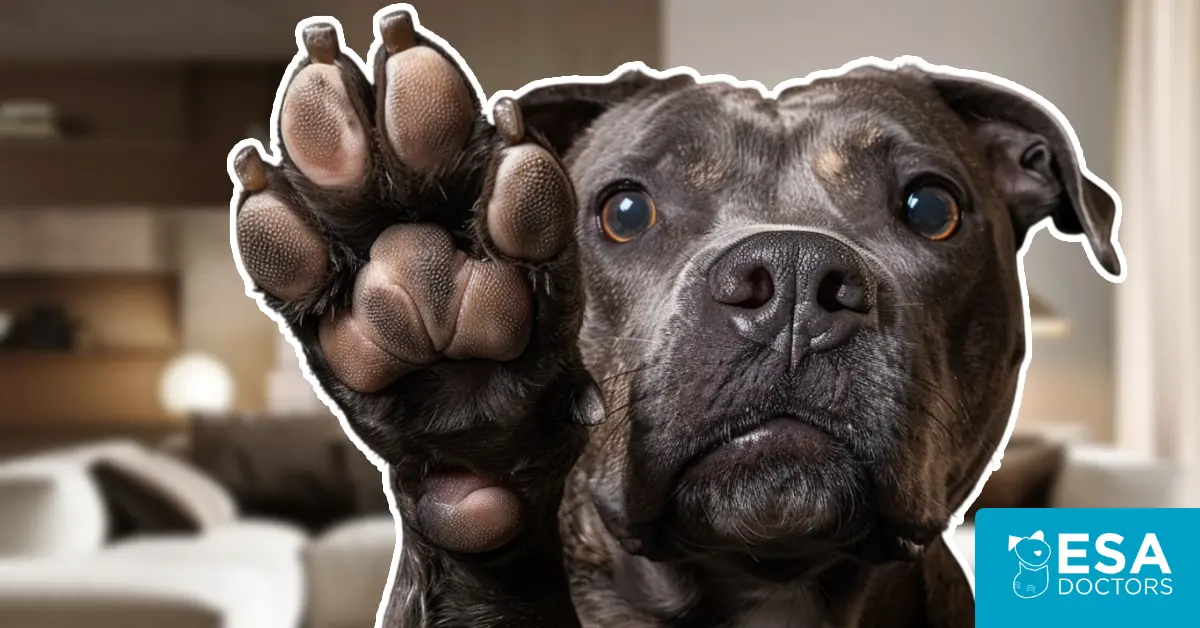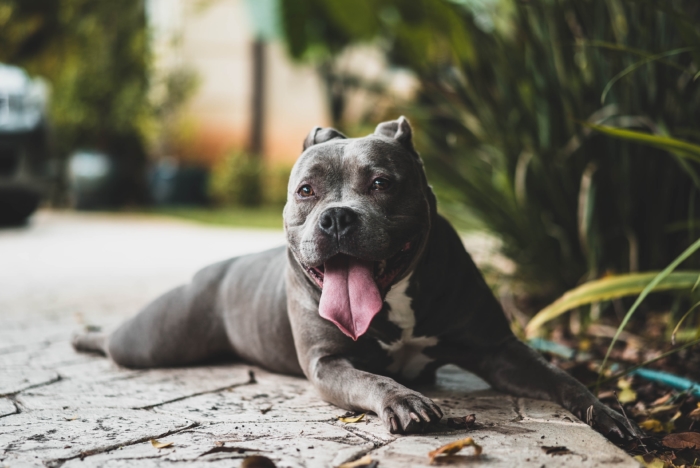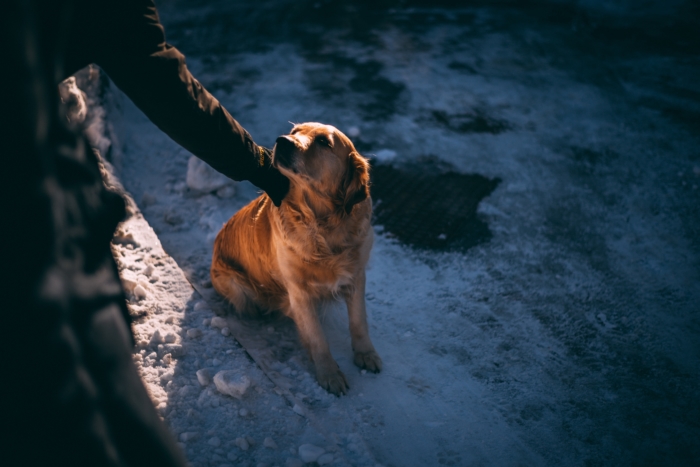The unique nature of human fingerprints and their use as a natural identifier of individuals was established by Francis Galton in the 19th Century. But does this phenomenon extend to dogs? Although footprint identification techniques have been used across many species, dogs’ nose prints are actually unique and have more similarities to human fingerprints. Read on to learn more!
Are dog paws unique?
Dogs are active and athletic, and their paws play a huge role in their ability to lead these busy lifestyles. Their toes, with attached claws, provide traction on varied terrains, and the pads act as cushions, absorbing the shock from high impact and constant use.
There is significant variation in paw size and shape between dog breeds and individuals. Some dogs have smaller, rounded, and compact feet, whereas others have ‘hare feet’ with the two middle toes elongated for extra strength and speed. Breeds who have evolved to be near water often have increased webbing to their feet than more land-based breeds. These differences show a fascinating insight into how dog breeds have evolved to best serve their purpose.
Dog paw prints also vary between individuals. The Footprint Identification Technique (FIT) has been used in multiple species, usually as an ecological tool to monitor populations. The use of various footprint techniques have been reported successfully in rhinos, tapirs, pumas, and tigers. Paw print identification is used mostly to estimate numbers, movement, and population changes in groups of animals, but it has been shown to be able to differentiate between species and genders of animals.
Footprint analysis has been used in dogs to differentiate between dog types and species. A 2015 study used footprint morphometrics to successfully distinguish between African wild dog and domestic dog prints, using total pad area and the angle between the back pad and digits.
However, dogs’ paws — although varying in size and shape — do not contain the same intense level of detail as human fingerprints. Dog paw pads are ridged and lined in patterns. Therefore, ey are not reliably used for individual identification.
Noses: the new fingerprints?
If you’re disappointed that a dog’s paw print couldn’t be used to hunt down a canine criminal or identify a long-lost pup, don’t be! It turns out that dogs do have a unique identifying feature: it’s their nose.
The section of a dog’s nose between and around the right and left nostrils, including the area around the philtrum and extending slightly up above the nostrils, is known as the Region of Interest (ROI). This part of the dog’s nose has a complex pattern of folding skin consisting of small protuberances, called beads, and narrow ribbon-like lines between the beads, called grooves. Each dog has a canine nose pattern made up of combinations and patterns of these grooves and beads.
Research into the individuality of nose patterns originated with cattle and then branched out into other species including dogs, wolves, cats, and deer. A recent study published in 2021 used 180 nose images from 60 dogs to confirm that dog nose prints are indeed unique to each individual. However, this form of identification has been recognized for decades. Nose printing of dogs was accepted as a form of identification by the Canadian Kennel Club from 1938, until overtaken by the more convenient strategy of microchipping.

Make Your Own Dog’s Unique Nose Print
There is no database of canine nose-prints, unlike the Automated Fingerprint Identification System (AFIS) used in human policing. But you can make your own dog’s nose print and turn it into a lovely, unique keepsake!
To print your dog’s nose print, follow these steps:
- Use some paper towel or tissue to dry your dog’s nose a little
- Use another piece of paper towel or tissue to apply a little food coloring to your dog’s nose (tip: dark colors work best)
- Press a piece of white paper across your dog’s nose, starting on one side and then curving across to the other side so that you get a full impression
- Clean your dog’s nose gently, and leave the print to dry
This process can require a little practice, especially if you have a livelier canine friend, but it can make a lovely piece of doggy art — and every print will be as individual as your dog is.
Every Dog is Unique
Those of us who love dogs know that each one has their own character, individual traits, and unique appearance. Detailed research over recent decades has shown that many animals have unique identifying features. In dogs, their nose is the closest thing to the identifying nature of human fingerprints. So next time you give your dog a gentle ‘nose-boop,’ remember that there isn’t another nose quite like that one!
Does your dog provide emotional support? Get a legit ESA letter in your state in 3 easy steps.





Leave a Comment